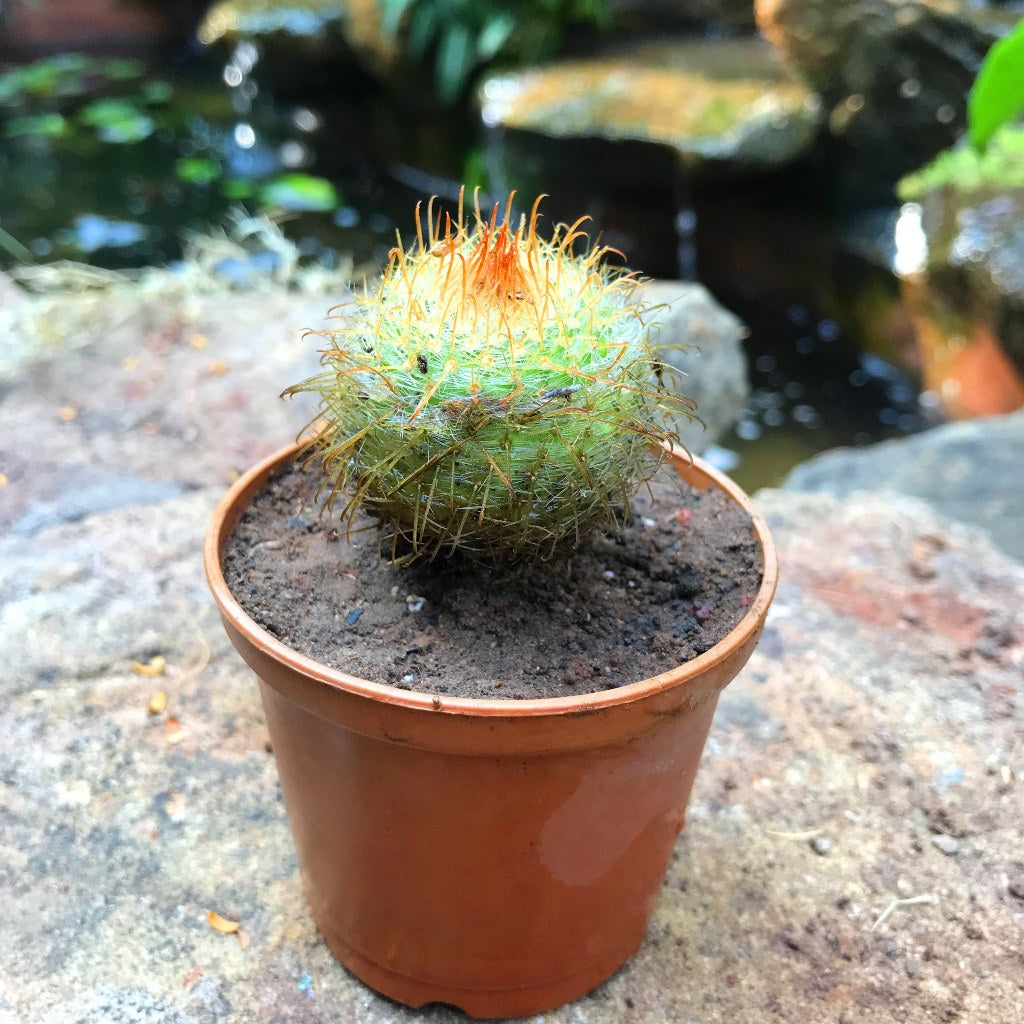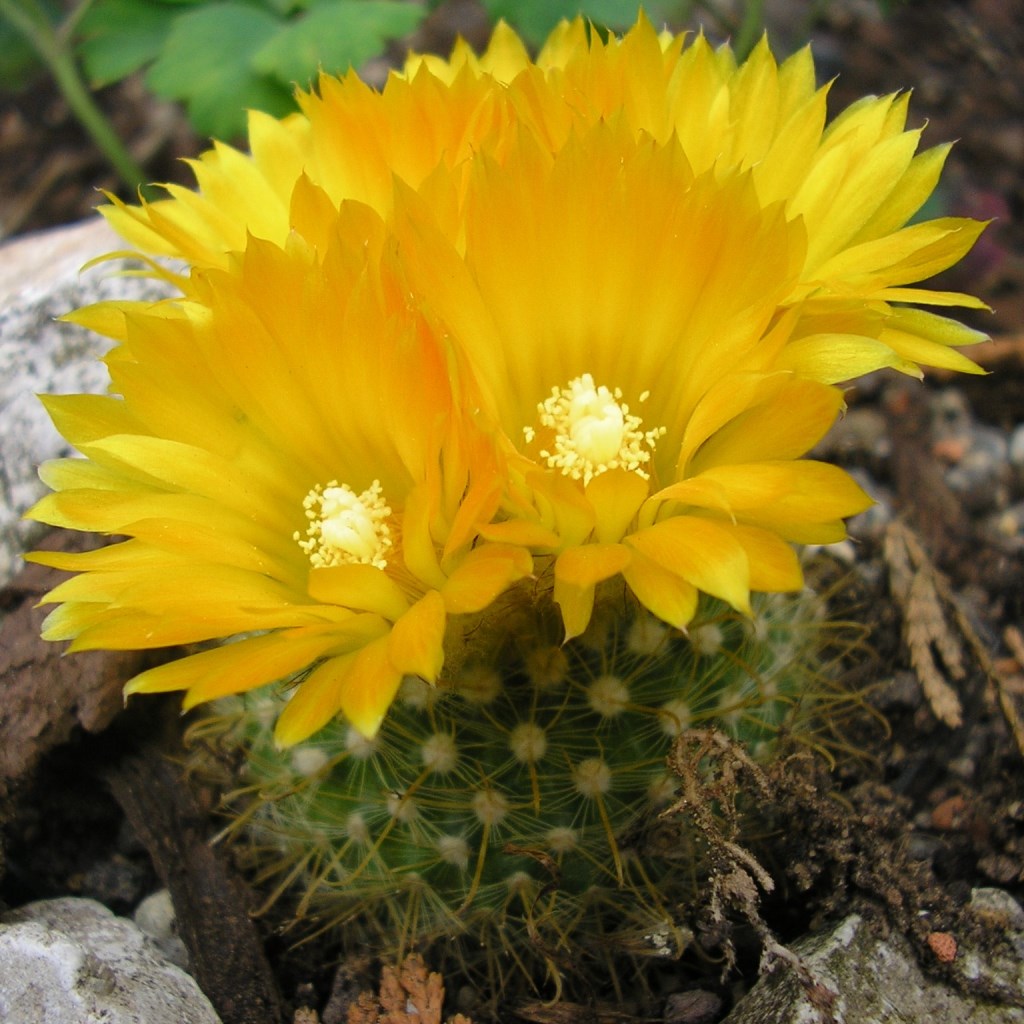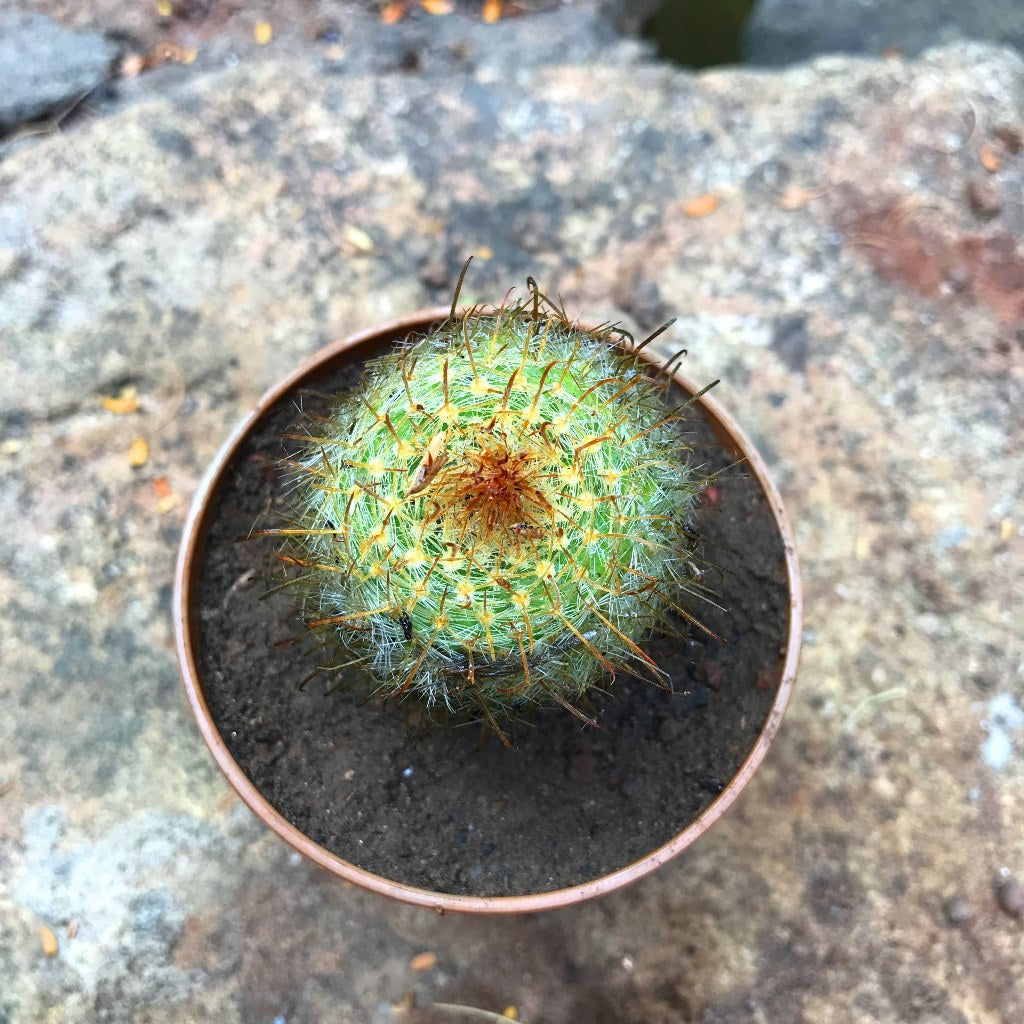Parodia microsperma
Family
Cactaceae
Native
Bolivia & Argentina
Description
Parodia Aureispina, also known as Parodia Microsperma , has a compact small to medium-sized cacti densely covered in dense white and yellow spines. Usually solitary, but can forms small clusters.
Stem are cylindrical, light green or bluish-green up to 6-7(-9) cm in diameter and 10 cm tall (or more) . Parodia has 13-21 spiraling ribs with conical tubercles 4-5 mm in diameter 3 mm long. Areoles are 1,5 mm in diameter with white-yellowish tomentum that fade away as they age. Radial spines are 11-13 thin,bristly, white, up to 7 mm long.Central spines are 4, short, hooked of which the upper three are honey-yellow to reddish-brown with a reddish tip, while the lower one is more long and strong.
Flowers are bright yellow, infundibuliform on the plant apex 2,5 mm long, 40 mm in diameter. External tepals spatulate or lanceolate, denticulate yellowish-orange.The throat is yellow, the filaments bear cream-yellowish anthers. Stile white-yellowish bearing a 12 lobed stigma.
In blooming season, Parodia produces several flowers simultaneously in early summer, the flowers remain open for about three days
Environment
Parodia Cactus prefers bright light and ample airflow. Outside it likes full sun or afternoon shade, inside it needs bright light, and some direct sun. It requires excellent drainage provided by porous cactus soil. Repotting may be done every 2-3 years.
Water the soil abundantly when it is dry to the touch. Allow soil to drain thoroughly before watering again. Do not water much in the winter. Allow the soil mix to become nearly dry between waterings, but then water thoroughly. Suspend watering in the winter, but mist occasionally.
During the growing season, fertilize with a cacti fertilizer mix.























